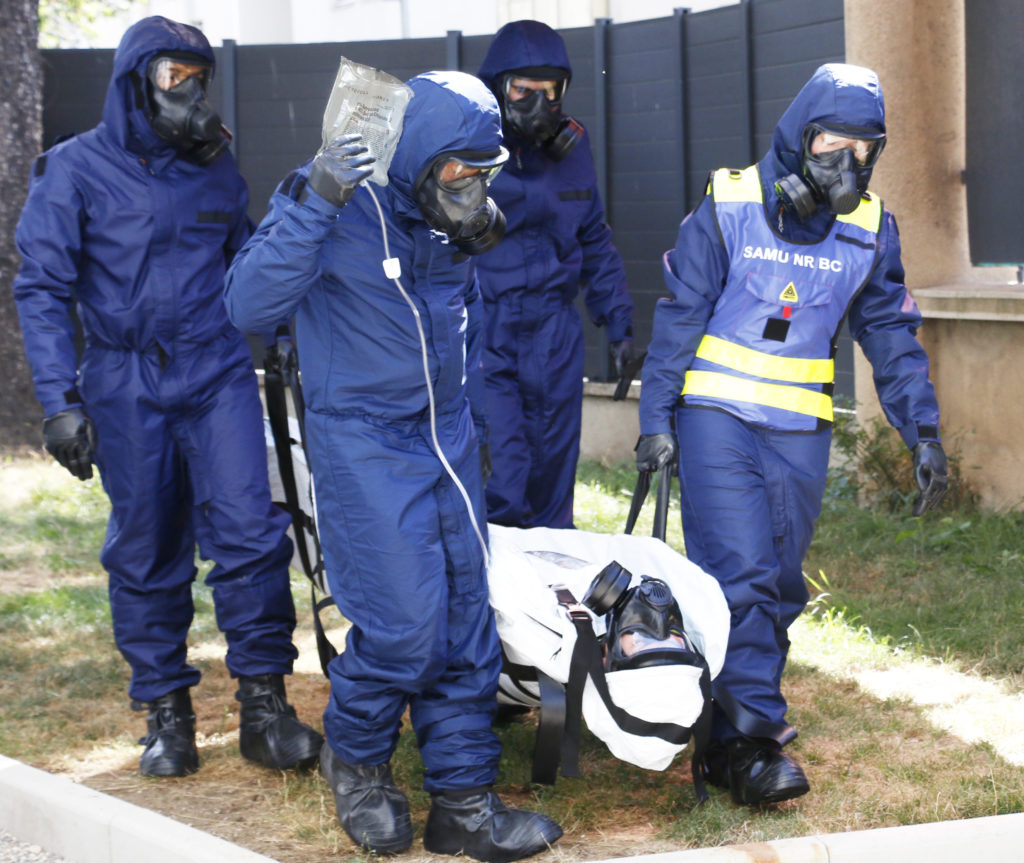What is it about?
In a recent article, Bruno Garrigue raises the question of the sizing of protective clothing for health care personnel, whether they are in hospitals, outside hospitals, on external missions, on humanitarian missions, etc.
If there are PPE (Personal Protective Equipment) well adapted to the risks incurred, for example for firemen, the military, industrialists, the agricultural sector, it turns out that, for the moment, there is no clothing adapted to the specific risks incurred by health care workers who have to perform medical procedures sometimes in difficult climatic conditions or in a chemically or biologically contaminated environment.
Bruno Garrigue asks the following question: in a contaminated environment, either voluntarily during an act of biological aggression, or involuntarily in the case of a pandemic for example, what could be an adapted PPE allowing to protect the caregiver while leaving him free to perform medical care? If the knowledge of the biological agent, and in particular its mode of transmission (droplets, aerosols, biological liquids…) allows to adapt the protection as well as possible, it sometimes happens that its ignorance can be the source of an overprotection or worse, of an underprotection of the personnel.
In this blog, we have already addressed the problem of PPE used in EBOLA outbreak areas: see the corresponding article.
In the event of a fatal risk, the PPE must be category III
Currently, caregivers can wear 2 types of suits initially adapted to CBRN risks
– waterproof or impermeable type 3 (resistant to liquid in the form of a high-pressure jet).
Completely waterproof, they are “a priori” reassuring but they have many disadvantages. Particularly uncomfortable, especially in hot countries, when worn for a long time they can cause hyperthermia and require a high turnover of personnel. On the other hand, the entry of contaminated air by pumping effect at the interfaces is a definite disadvantage. Single use, they are inexpensive but produce a lot of waste;
– type 4 filtering, which can handle liquids in the form of sprays, allow perspiration to evaporate and thus improve thermoregulation. Without pumping effect, they capture the contaminant coming from outside thanks to a filtering media fixed under the external water-repellent envelope. Reusable, it produces much less waste.
What do the studies conducted on this “caregiver” theme tell us?
No serious study is able to clearly define the protective clothing to be worn by a caregiver during an outbreak. The materials available are often too protective and hinder the professional in his care activity, or too unprotective, exposing him to biological risks.
A large-scale bibliographical study has been carried out by Verbeel et al. but it gives contrasting results that are difficult to interpret.
Although the authors agree that protective clothing is essential for healthcare workers, they note that the problem is much more complex than it appears. For example, a long suit will provide better protection than a simple apron, but putting it on and taking it off are crucial steps that can lead to contamination. Training must be developed and users must follow instructions correctly. Regarding respiratory protection, how to choose between paper masks and breathing apparatus, for which the interface with the suit will have to be adapted. This seems to be a major problem at the moment. On the other hand, studies show that PPE made of breathable textiles is preferred by users for its comfort.
What is happening in practice now?
The author gives us some current practices: in the Democratic Republic of Congo in 2019, in the context of an active Ebola outbreak, the members of a team taking care of war wounded were equipped with type 2 waterproof suits with integrated ventilatory apparatus, while those working in the Ebola treatment center and who did not perform surgical procedures, wore waterproof suits of which certain parts were reused (boots, apron, gloves, etc.), supplemented by disposable masks.
All these tight-fitting outfits, which are difficult to wear, also require the acquisition of specific skills, and therefore the implementation of a training program. In addition, their storage is important and waste management difficult.
Concerning the hospital gowns used against COVID-19, they are mainly light, disposable gowns (when they are not garbage bags cut up in case of supply shortage!) completed by a disposable ffp2 mask.
A specific outfit?
Bruno Garrigue also notes that the choice of the elements of an outfit adapted to a given situation wastes a lot of everyone’s time.
All this leads the author to ask the question of a specific standard “caregivers” outfit, allowing to accomplish medical gestures in a biologically hostile environment. He gives the main characteristics of such an outfit, including
simplicity of use (quick learning),
comfort (therefore filtering),
versatility (i.e. adaptable to various respiratory interfaces).
It should be reusable to limit storage and waste and declassified to facilitate export for NGOs.
Conclusion
It is true that the question deserves to be asked: caregivers have a difficult job, especially when they are on mission in hot countries in times of outbreak and must perform sometimes delicate medical procedures in order not to endanger the life of their patient. An adapted standard outfit would be welcome to protect them from infectious risks while being comfortable and generating as little storage and waste as possible.
Autor: Prof. François Renaud



